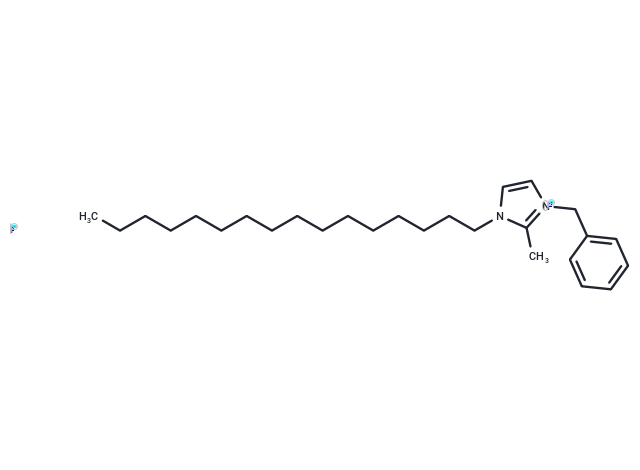Shopping Cart
- Remove All
 Your shopping cart is currently empty
Your shopping cart is currently empty

NH125 is a selective eEF-2 kinase inhibitor with IC50 of 60 nM, >125-fold selectivity over PKC, PKA, and CaMKII, and also a potent histidine kinase inhibitor.

| Pack Size | Price | Availability | Quantity |
|---|---|---|---|
| 1 mg | $34 | In Stock | |
| 2 mg | $48 | In Stock | |
| 5 mg | $80 | In Stock | |
| 10 mg | $122 | In Stock | |
| 25 mg | $278 | In Stock | |
| 50 mg | $478 | In Stock | |
| 100 mg | $689 | In Stock | |
| 1 mL x 10 mM (in DMSO) | $89 | In Stock |
| Description | NH125 is a selective eEF-2 kinase inhibitor with IC50 of 60 nM, >125-fold selectivity over PKC, PKA, and CaMKII, and also a potent histidine kinase inhibitor. |
| Targets&IC50 | eEF2K:60 nM |
| In vitro | In C6 glioma cells, NH125 decreases the cellular content of phospho-eEF-2 without affecting total content eEF-2 content, and blocks cell cycle transit at the G1-S boundary. NH125 potently inhibits cell viability of 10 cancer cells with IC50 ranging from 0.7 to 4.8 μM. [1] NH125 effectively inhibits histidine protein kinases, including Envz, PhoQ, BvgS, EvgS, and thus produces potent anti-bacteria activities on oxacillin-resistant Staphylococcus aureus (ORSA), vancomycin-resistant Enterococcus faecalis (VRE), penicillin-resistant Streptococcus pneumoniae (PRS), and other Gram-positive and Gram-negative bacteria. [2] EEF2K inhibition by NH125 renders tumor cells more sensitive to curcumin and velcade, which possess ER stress-inducing action. [3] |
| In vivo | NH125 reduces blood pressure in SHR and ROS production, induction of inflammatory molecules, and hypertrophy in SHR superior mesenteric artery. [4] |
| Kinase Assay | eEF-2 Kinase Assay: eEF-2 kinase activity is measured by two methods: (a) a filter-based assay; and (b) by immunoblotting using antiphospho-eEF2 antibody. For both of these, reactions are carried out in 20 μl of total volume containing 50 mM HEPES (pH 7.5), 10 mM MgCl2, 1.5 mM CaCl2, 100 μg/ml calmodulin, 2 μM His-tagged eEF-2 and 400 nM GST-eEF-2 kinase, and ATP mixture [50 μM ATP with 1μCi (γ-33P)ATP]. The kinase mixture without ATP is prepared on ice and then preincubated for 15 min at room temperature. Kinase reactions are started by adding ATP and allowed to progress at 30°C for 30 min. For the filter-based assay, the reaction is terminated by adding 20 μl of cold 1.5% phosphoric acid, and 5 μl of the reaction are applied to P81 Whatman phosphocellulose paper. The paper is washed three times in 500 ml of 0.5% phosphoric acid and once with 200 ml of acetone. The paper is then air-dried and immersed in 10 ml of scintillation mixture. Radioactivity is counted using a Beckton-Dickinson liquid scintillation counter. For immunoblotting, the reactions are stopped by addition of 20 μl of 3× Lamelli buffer [190 mM Tris (pH 6.8), 6% SDS, 30% glycerol, 15% 2-mercaptoethanol, and 0.003% bromphenol blue dye]. Samples are boiled for 5 min and resolved by 7% SDS-PAGE and processed for Western blotting as described below. Conditions for both assays are chosen to ensure linearity of the reaction with respect to time of incubation and concentration of enzyme. |
| Cell Research | The viability of cells is measured using an MTT assay. Briefly, 5 × 104 cells are plated in 96-well plates and exposed to various concentrations of drug for 48–72 h. The formazan product formed after 4 h incubation with MTT is dissolved in 100% DMSO and read at 550 nM using a Dynatech Microplate Reader MR5000. (Only for Reference) |
| Molecular Weight | 524.56 |
| Formula | C27H45IN2 |
| Cas No. | 278603-08-0 |
| Smiles | [I-].CCCCCCCCCCCCCCCCn1cc[n+](Cc2ccccc2)c1C |
| Relative Density. | no data available |
| Storage | Powder: -20°C for 3 years | In solvent: -80°C for 1 year | Shipping with blue ice. | ||||||||||||||||||||||||||||||||||||||||
| Solubility Information | DMSO: 52.5 mg/mL (100.08 mM), Sonication is recommended. Ethanol: 39.3 mg/mL (74.92 mM), Sonication is recommended. | ||||||||||||||||||||||||||||||||||||||||
Solution Preparation Table | |||||||||||||||||||||||||||||||||||||||||
Ethanol/DMSO
DMSO
| |||||||||||||||||||||||||||||||||||||||||

Copyright © 2015-2025 TargetMol Chemicals Inc. All Rights Reserved.